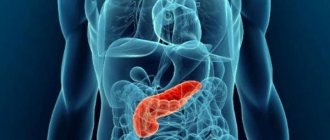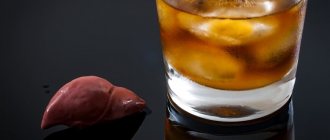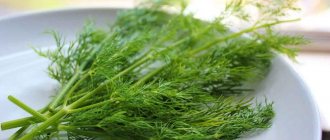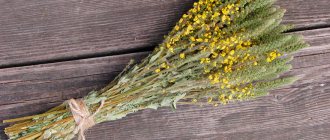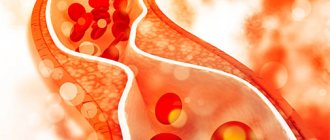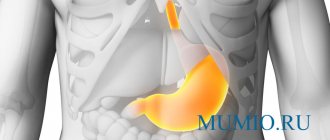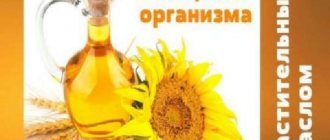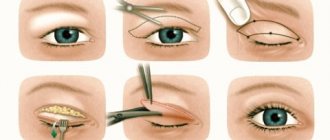The liver is the main filter of the human body. It cleanses the blood, removes toxins and metabolic by-products, but sometimes it itself needs cleansing and restoration. Let's look at which herbs are good for the liver and how to use them.
Beneficial properties of plants for the liver
What diseases do liver herbs help with?
List of the best herbs for the liver and pancreas
TOP 10 best herbs
Liver herbal preparations
Sources
Beneficial properties of plants for the liver
Medicinal herbs not only prevent liver diseases, but also have a positive effect on digestion, the functioning of the gallbladder and pancreas.
Action of plants for the liver:
- accelerate detoxification of the body;
- have a hepatoprotective effect - protect liver cells (hepatocytes) from destruction;
- improve digestion;
- have anti-inflammatory and antispasmodic effects;
- increase the secretion of bile and gastric juice;
- exhibit antioxidant activity;
- have an antitumor effect.
Despite the benefits of medicinal plants for the liver and pancreas, they should be used only after consulting a doctor. Self-medication can lead to negative consequences.
How alcohol affects the liver
Only 5-10% of alcohol consumed is excreted from the body directly.
The rest passes through the liver, where it is broken down into harmless compounds. During processing, a toxic intermediate product is formed - acetaldehydrogenase, which has a destructive effect on the cells of the organ. According to WHO, the safe daily dose of pure alcohol is 40 g for men and 20 g for women, provided that alcohol consumption occurs no more than 1-2 times a week. Hepatocytes have time to recover within a few days, and the harm to the body is minimal. With binge alcoholism, regeneration takes from six months to several years. In this case, complete recovery is impossible.
Help with withdrawal from binge drinking at home
If you drink alcohol regularly and the amount exceeds the permissible limit, metabolic processes are disrupted. Accumulated toxins cause oxygen starvation of liver cells, which prevents their regeneration. As a result, destroyed hepatocytes are replaced by adipose tissue, leading to steatosis, or fatty disease. Alcohol also stimulates increased collagen production, resulting in some of the cells being replaced by connective tissue. Scarring occurs and fibrosis develops.
In the absence of treatment and continued alcohol consumption, the disease develops into hepatitis, and in 25% of cases, alcohol abusers are diagnosed with cirrhosis of the liver, which develops into carcinoma and leads to death.
Even after short-term alcohol abuse, it is necessary to undergo rehabilitation therapy to prevent complications. The rate of liver regeneration depends on gender, genetic predisposition, and characteristics of the body. For some people, even a minimal dose of alcohol can be fatal and cause toxic damage to the organ followed by necrosis. The only chance to prevent risks to life and health is to give up alcohol forever and consult a doctor to diagnose the severity of the disorders and prescribe effective treatment.
What diseases do liver herbs help with?
Herbal medicine for liver diseases can only be used as part of complex therapy. With its help, it is possible to increase the effectiveness of the main treatment, reduce the toxic load on the liver, and improve its functioning.
Medicinal plants will help with the following problems:
- alcohol intoxication and other toxic organ damage;
- cirrhosis;
- viral hepatitis;
- cysts;
- tumors;
- fatty hepatosis. {1}
Herbs for cleaning and restoring the liver stop the process of replacing normal liver tissue with fatty or connective tissue, prevent the death of hepatocytes and organ dysfunction.
In addition to those that are beneficial, there are also herbs that are harmful to the liver. These include celandine, thistle, comfrey, coltsfoot.
How do natural hepatoprotectors work?
Natural hepatoprotectors include preparations of plant and animal origin that contribute to:
- increasing the resistance of liver cells to damaging influences;
- normalization of the most important functions of the liver, including the ability to neutralize toxins;
- reducing the severity of inflammation;
- restoration of damaged liver cells.
Alcohol and smoking, unbalanced diet, uncontrolled use of medications, infections, frequent stress... Our liver is forced to repel attack after attack. By the way, scientists have recently found that signs of its damage can be observed with the new coronavirus infection COVID-19.
List of the best herbs for the liver and pancreas
The following plants are suitable for the prevention of liver and pancreas diseases:
- milk thistle;
- chicory;
- St. John's wort;
- knotweed;
- chamomile;
- calendula;
- peppermint;
- licorice naked;
- burdock;
- oregano;
- liverwort or coppice;
- dandelion;
- sand immortelle;
- sagebrush;
- artichoke;
- astragalus;
- yarrow;
- sweet clover;
- angelica officinalis;
- elecampane;
- corn silk;
- series.
These herbs can be used individually or as part of herbs.
Signs of liver damage
The danger of most alcoholic liver diseases is that in the early stages they are practically asymptomatic. The organ has no nerve endings, so there is no pain. At the initial stage, pathology cannot be determined without a biochemical blood test or ultrasound of the abdominal cavity. Pain appears after a significant increase in the liver, when it begins to put pressure on other organs and tissues.
The first signs of damage are increased fatigue, sleep disturbances, and deterioration of skin condition. These manifestations are attributed to overwork and are often ignored. As the disease progresses, the following symptoms occur:
- feeling of heaviness in the right hypochondrium;
- enlarged spleen;
- peeling of the skin, formation of spider veins on the face;
- the appearance of bruises for no reason;
- yellowness of the skin and mucous membranes;
- sudden weight loss, loss of appetite;
- feeling of fullness in the stomach after eating;
- bitterness in the mouth, which is associated with a violation of the outflow of bile;
- nausea and vomiting, sometimes with blood;
- swelling, enlargement of the abdomen due to impaired fluid outflow;
- dark circles under the eyes;
- darkening of urine;
- light-colored liquid stool.
At the slightest suspicion of liver dysfunction, you should completely stop drinking alcohol and consult a doctor. At an early stage, with appropriate treatment, almost complete restoration of the organ is possible.
TOP 10 best herbs
Let's look at the most effective medicinal plants for the liver, their effects and uses.
Milk thistle
Milk thistle is the best herb for the liver. It contains silymarin - a complex of biologically active substances that have the following effects:
- hepatoprotective;
- antioxidant;
- immunostimulating;
- anticancer;
- anti-inflammatory.
The main function of milk thistle for the liver is the regeneration of liver cells and the normalization of organ functions. The plant also has a positive effect on the functioning of the gallbladder. It dilutes bile and improves its outflow, preventing the occurrence of inflammatory processes and the development of gallstone disease.
The use of milk thistle is possible for cirrhosis, toxic damage, and chronic hepatitis. Its seeds can be consumed orally in crushed form, 1 tsp. in 20 minutes before meals.
A decoction is suitable for cleansing the liver. Recipe:
- Grind 30 g of fruits, pour 0.5 liters of boiling water.
- Cook over low heat until the liquid evaporates by half.
Use 1 tbsp. l. 3 times a day.
Artichoke
The list of the best plants for restoring the liver includes artichoke. It contains cynarine, a substance that promotes the regeneration of hepatocytes. The herb protects liver cells from toxins, removes waste and heavy metal salts, and also supports the functioning of the gallbladder and bile ducts, as it stimulates the excretion and outflow of bile.
Artichoke is used in folk medicine to prevent fatty degeneration of the organ and jaundice. For medicinal purposes, you can prepare a decoction or alcohol tincture.
Artichoke-based medicine recipes:
- Decoction. 1 tbsp. l. leaves, pour 250 ml of water, boil, leave for 20 minutes. Drink 80 ml.
- Alcohol tincture. Pour 500 g of leaves into 1 liter of vodka and leave for 2 weeks in a dark place. Drink 1 tbsp. l. product diluted in 100 ml of water.
The course of treatment is 1-2 weeks.
Immortelle
Immortelle herb is suitable for the liver, gall bladder, stomach and kidneys. It helps cleanse the body after hepatitis and restore the functions of hepatocytes.
Useful properties of immortelle:
- enhances bile production;
- relieves spasm of the gallbladder;
- dilutes bile;
- improves digestion;
- reduces bilirubin levels.
A positive effect on the organs of the hepatobiliary system is achieved due to flavonoids, organic acids, vitamins C and K, which are contained in immortelle.
Recipe for preparing a decoction to cleanse the liver:
- 3 tbsp. l. flowers pour 1 tbsp. cold water.
- Cook in a water bath for 15 minutes. after boiling.
- Leave for 45 minutes.
- Bring the volume of infusion to 200 ml.
Drink 1/3 tbsp. 3 times a day half an hour before meals. The course of treatment lasts a month.
Dandelion
Dandelion is a liver cleansing herb. It normalizes metabolic processes, cleanses the body of harmful substances, and has a choleretic and antispasmodic effect.
It should be used to protect the organ in case of food or chemical poisoning, as well as cholecystitis, gallstones, hepatitis and cirrhosis. Dandelion leaves, roots and flowers are suitable for preparing the medicine. {2}
To cleanse the liver, you can prepare a decoction. His recipe:
- 2 tsp. chopped roots pour 1 tbsp. water.
- Cook for 10 minutes.
Drink 100 ml morning and evening 20 minutes before. before meals.
Chicory
Inulin is the main beneficial substance for the liver, which is contained in chicory. Its main concentration is in the roots of the plant. Inulin improves digestion and is suitable for the prevention and treatment of liver diseases.
Other bioactive substances in the plant activate metabolic processes, normalize the functioning of the organs of the hepatobiliary system, and prevent the development of cancer cells. {3}
To prepare a healing drink you will need the following ingredients:
- crushed chicory roots - 1 tsp;
- water – 250 ml.
The raw materials must be filled with water, then kept in a water bath for 30 minutes. Drink 1/3 tbsp. 3 times a day for 20 minutes. before meals. The course of admission is 1-2 months.
Calendula
Calendula has a positive effect on the health of the liver and bile ducts. An infusion of plant flowers stimulates the secretion of bile, reduces spasms, and promotes tissue regeneration. This effect is achieved due to rubixanthin, a substance found in calendula.
Recipe for an infusion to restore hepatocytes after hepatitis:
- 3 tbsp. l. crushed flowers pour 200 ml of boiling water.
- Leave for 2 hours.
Drink 2 tbsp. l. 3 times a day.
The leaves and roots can also be used for medicinal purposes. They have restorative properties and the ability to destroy gallstones.
The best restorative effect can be achieved by combining calendula with chamomile, mint and yarrow.
Peppermint
Mint is the most accessible herb for cleansing the liver. It is suitable for detoxifying the body, reducing symptoms of intoxication, pain and spasms. Peppermint tea improves the flow of bile and restores the tone of the bile ducts.
For detoxification, a drink with the following ingredients is suitable:
- fresh mint leaves – 50 g;
- lemon juice – 25 g;
- orange juice – 30 ml;
- honey - 3 tbsp. l.;
- water – 1 l.
Boil water, add mint and boil for 5 minutes. After the drink has cooled, add lemon and orange juice, honey. Use 1 tbsp. daily. The course of admission is a week.
Sagebrush
Wormwood is used to prevent hepatitis, cholecystitis, cholelithiasis, and also for kidney stones. The stems of the plant contain inulin, tannins and vitamins, which have a positive effect on the liver.
Tincture recipe:
- Pour 10 g of dry grass into 0.5 liters of vodka.
- Leave for 20 days.
Drink 1 tbsp on an empty stomach in the morning. l. The course of treatment is 30 days. It can be repeated after 2 months.
knotweed
Bird knotweed or knotweed can be beneficial for urolithiasis, cholelithiasis, kidney and liver diseases. For medicinal purposes, an infusion prepared according to the following recipe is used:
- 3 tbsp. l. herbs pour 1 tbsp. boiling water
- Leave for 30 minutes.
Drink 1/2 or 1/3 tbsp. 2-3 times a day before meals.
The knotweed infusion must be consumed through a straw to avoid damaging tooth enamel.
Chamomile
Chamomile tea reduces inflammation and normalizes the flow of bile, cleanses the liver, and has an antispasmodic effect. To prepare it you will need:
- 1 tsp. chamomile flowers;
- 200 ml water.
Pour boiling water over the raw materials and leave for 30 minutes. Drink 100 ml 1 hour before meals 3 times a day.
Dietary food during therapy
A measure of prevention and therapy for diseases of the gastrointestinal tract is special diet number 5. It is prescribed to patients with pancreatitis or impaired liver function. It is also suitable for patients with diabetes. This disease often develops against the background of liver damage.
Authorized products:
- thermally processed low-fat dairy products (dishes like casseroles or cheesecakes);
- egg white omelettes (the yolk is difficult to process and therefore undesirable);
- porridge with water (rice, oatmeal)4
- vegetable puree soups and purees based on potatoes, cauliflower, zucchini;
- fruit drinks and jelly without sugar, decoctions of medicinal herbs, weak black or green tea without additives;
- crackers, biscuits or dry bread.
This diet is used when the patient’s condition has already returned to normal. It is usually prescribed 3-4 days after an exacerbation of pancreatitis, hepatosis or other disorder of the processing organs. Before the diet, you can only drink various liquids: decoctions, fruit drinks, water, tea. In a state of exacerbation, the body is not able to digest food; there is constant vomiting, which intensifies after eating solid foods. First, the patient should drink these drinks every 15-20 minutes, trying to control vomiting. When the condition is somewhat normalized, with the permission of the doctor, you can switch to diet number 5.
Important. Dietary nutrition reduces the load on the pancreas and liver, allowing the organs to recover. It increases the effectiveness of using folk remedies and special medications.
A few dozen days after starting diet number 5, you can switch to a less strict diet: baked and fresh non-sour fruits and dietary marshmallows are added to the diet. After some time, you can add honey and unsweetened jam. During the diet, you need to strictly monitor your blood sugar readings, since diabetes mellitus can develop against the background of liver and gland disorders. With prolonged fasting, which is necessary before starting a diet, the risk of developing diabetes increases. Therefore, the initial stage of the diet, when only liquids are allowed, should be carried out under the supervision of a doctor.
We also recommend viewing: Stage 4 pancreatic cancer: how long they live, basic methods of medical care, optimal solutions to basic problems
Dietary nutrition is not a folk remedy, although it is an auxiliary method of treatment. The diet should be compiled individually, according to the recommendations of the treating hepatologist. Elements of traditional medicine are present in the diet, but they need to be agreed with a doctor. You can use decoctions based on rose hips, raisins, celandine (with caution), chamomile and mint.
Liver herbal preparations
You can prepare herbal teas yourself or purchase them at a pharmacy.
List of pharmaceutical herbal remedies:
- Hepatophyte. Contains milk thistle, immortelle, string, dandelion, corn silk, chamomile and peppermint.
- Phytohepatol. Contains chamomile, calendula, mint, yarrow, tansy. The collection of these herbs improves cell regeneration and protects against destruction.
- Hepacholine. Contains yarrow, agrimony, milk thistle, rose hips, immortelle, dandelion, St. John's wort and corn silk.
For hepatitis, you can prepare a medicine consisting of mint, chamomile, St. John's wort and licorice. Take the ingredients in equal proportions. 1 tbsp. l. collection, pour 250 ml of boiling water, simmer for 15 minutes. Then leave for half an hour. Drink 100 ml after meals.
To improve the functioning of the liver and gallbladder, a decoction consisting of the following ingredients is suitable:
- milk thistle;
- corn silk;
- elecampane root;
- chamomile;
- series;
- dog-rose fruit.
You need to take 100 g of each herb and mix it. Brew raw materials like tea, 1 tsp. for 200 ml of boiling water. Take 30 minutes before. before meals.
Sources
- Ershova I. B., Osipova T. F. The use of medicinal plants as an auxiliary therapy for viral hepatitis // Current infectology. – 2022. – Volume 5. – No. 3. – pp. 153-159.
- Karomatov I.D., Davlatova M.S. Medicinal properties of the medicinal plant dandelion // Biology and integrative medicine. – 2022. No. 9 (26). – pp. 145-158.
- Saibel O. L., Dargaeva T. D., Pupykina K. A. Study of the choleretic and hepatoprotective activity of the common chicory herb // Medical Bulletin of Bashkortostan. – 2015. – No. 5 (59). – Volume 10. – P. 70‒73.
Tell us how you maintain liver health, what herbs you use!
